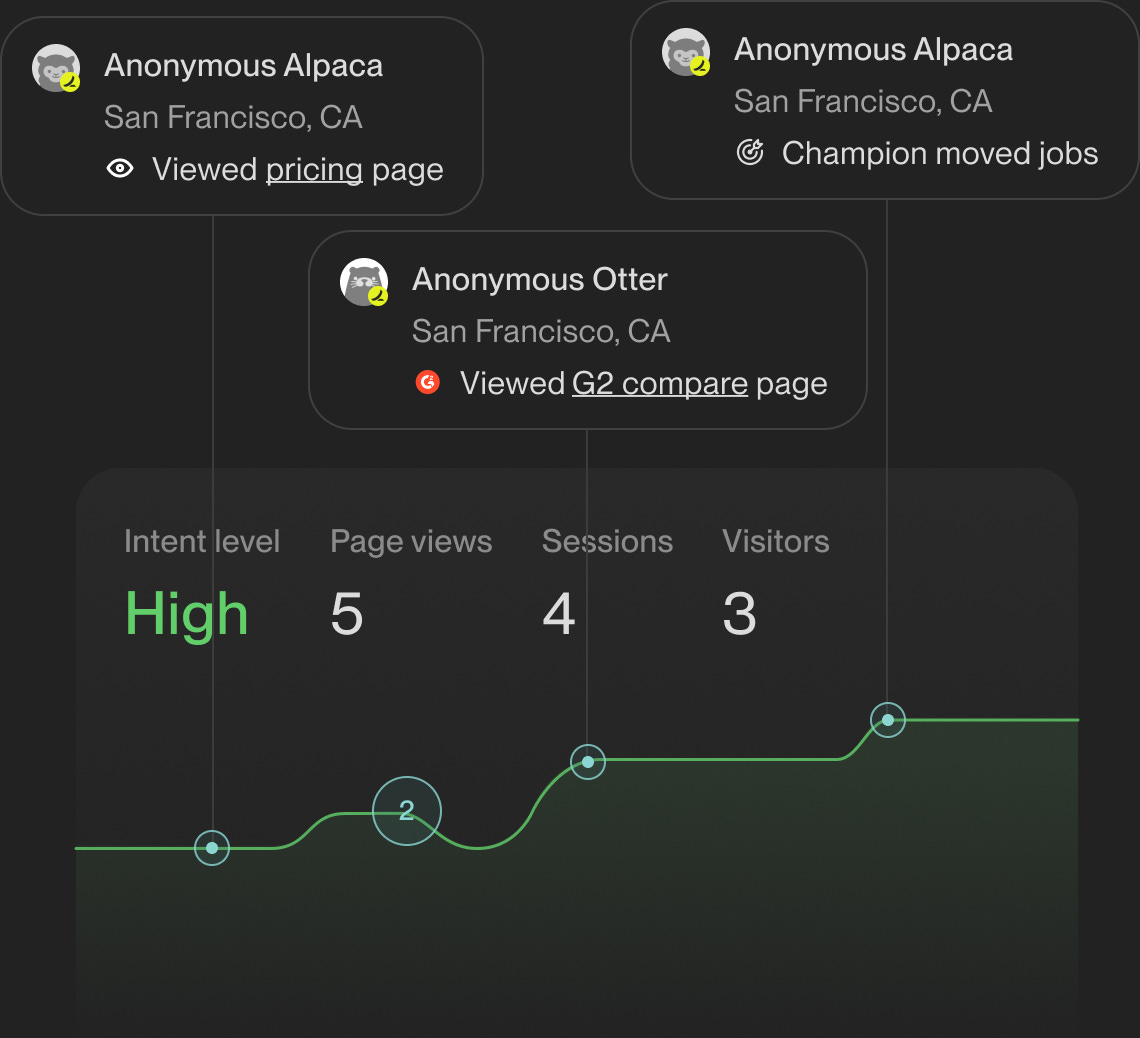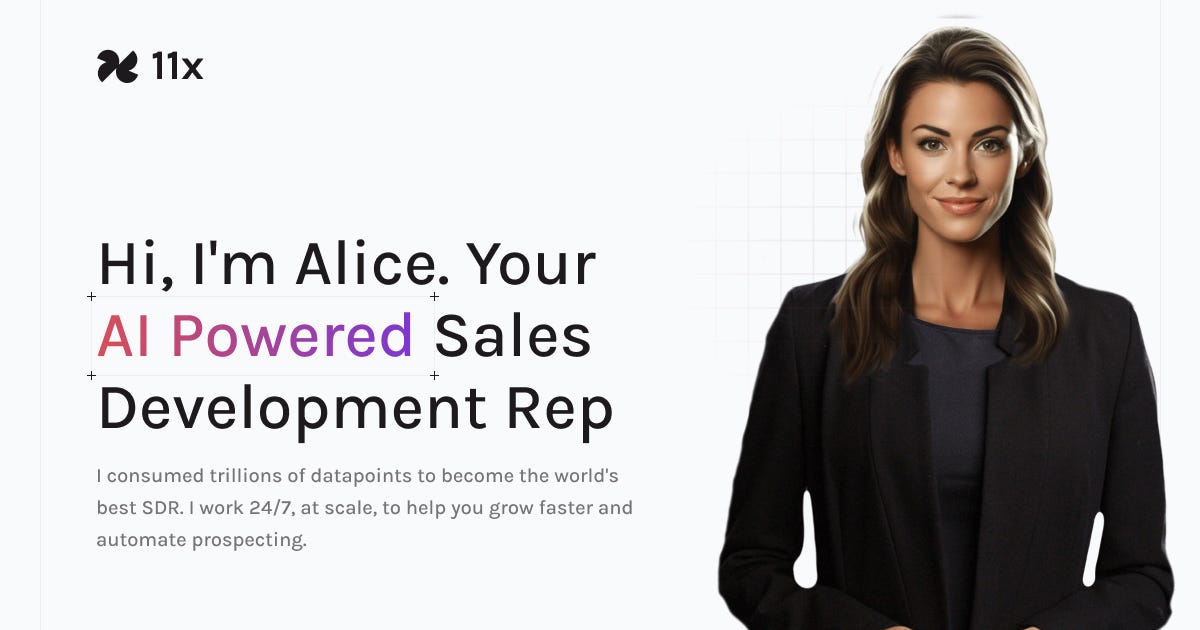The Sales Stack of the Future
How AI is pushing Sales into the modern age
The sales tech and buyers journey has become significantly more complex, disparate, and crowded over the past 10 years. After the success of Salesforce in the early days of the cloud, funding for “sales tech” companies ballooned from 2010-2020 (peaking in 2021 with $4.3B invested in the category), resulting in eyesore market maps like the one below. Every stage of the sales journey - from prospecting to closing - has been littered with new solutions that were fairly undifferentiated and didn’t necessarily move the needle.
Now, things are changing. Budgets have tightened. CROs are finding ways to consolidate their tool stack. Interactions are becoming more personalized. Amidst these challenges, a new wave of AI-first products has risen to help modern sales teams meet their goals.
Let’s dive in!
What are some of the macro trends we’ve observed within the sales stack?
1) The way buyers engage with sales teams has changed. Buyers are way less likely to answer cold emails and cold calls. According to Gartner, less than 17% of purchase activity time is spent interacting with supplier sales teams. Instead, 45% of time is spent conducting independent learning and 33% is spent building consensus with stakeholders. In other words, buyers are self-educating and self-qualifying before even speaking with a rep.
2) Time to value has become even more critical for companies. Buyers are looking for light-touch ways to test new products without interacting with sales reps (such as through a PLG motion). Customers also want to test their own proprietary data in product demos.
3) More cross-functional collaboration among teams (marketing, sales, customer success, product). Teams are more intertwined meaning there is more room for gaps to emerge where you can lose sight of the customer’s needs, and retention becomes challenged. (i.e., handoffs to professional services and customer success teams; implementing smooth billing and contracting solutions, etc.).
4) Sales strategies are more data-driven. Sales leaders want to understand their entire pipeline in a data-driven way. There is a greater emphasis on understanding precisely where in the pipeline a deal may get stuck, or how to better optimize funnel conversion.
5) Distributed workforces are changing how people work and sales teams operate. Remote work is driving new challenges for sales teams. Training and managing distributed teams is challenging.
6) Sales leaders are focused on profitability and productivity per head. The world has made a hard pivot from growth-at-all-costs to efficient selling. How do I do more with less?

What are we excited about?
Within the entire sales journey, there are a handful of specific areas we are particularly excited that AI can make a real and lasting impact:
1) Prospecting in a more personalized and efficient way.
Gone are the days when sales software tools simply helped reps 50x the number of cold emails and calls they could send. The success rate of cold calling hovers around 2% and cold emails suffer from a bad reputation (think of your own personal and business inbox!).
Now, revenue leaders can pair prospect data and telemetry with AI to create more targeted and personalized outreach, reaching a potential customer at the right time in their buying journey and with a more impactful message. These tools can also automate workflows, ensuring sales efficiency while casting a more selective net.
Companies we are excited about in this area include:
Clay, which integrates with 75+ enrichment tools and uses AI to craft relevant outreach at scale.
Unify, which discovers intent signals to help sales leaders generate more pipeline with warm outbound and close 25%+ more deals.
2) Agentic SDRs
The SDR (Sales Development Rep) or BDR (Business Development Rep) function typically sits at the very beginning of the sales cycle. The SDR is responsible for reaching out to new leads, qualifying these leads, and pushing them further down the sales funnel (typically handing off to an Account Executive who closes the deal). SDRs don’t have it easy - they send hundreds of emails a day, “smile and dial”, and GRIND. No surprise SDRs churn at a higher rate than any other sales role.
Agentic AI promises to change this. Agents (or fully autonomous AI replicas of SDRs) can automate the SDR function by automating customer research, email communications, and booking meetings. We believe this is an easier area for AI to play a role today compared to the AE function which requires a more “human touch” (at least for now). We don’t believe this agents will fully replace an entire SDR team but rather augment existing teams.
Companies we are excited about in this area include:
11x, whose AI-powered SDRs Alice and Jordan consume “trillions of datapoints” and “works 24/7” to drive more leads.
Lyzr, an enterprise agent framework whose AI SDR can be customized to the individual buyer’s needs.
3) Real-time Coaching for outside sales
Sales coaching is necessary for reps to improve, sharpen their skills, and strengthen their own careers. Originally sales coaching consisted of experienced managers sitting on sales calls and offering direct feedback. Then tools like Gong and Chorus (acquired by ZoomInfo) sprung up to automate this process as part of a broader RevOps platform.
However while Gong and Chorus focused mostly on sales coaching for inside sales, new AI tools are emerging for outside sales coaching. Outside sales and services (think of an electrician or plumber visiting your home) has a lot more noise and is less straightforward than reps dialing from the same location.
Companies we are excited about in this area include:
Rilla, which records and analyzes conversations between reps and customers to provide real-time feedback, and is growing fast!
In conclusion, what could we expect to change within the sales stack over the next 5+ years?
As AI makes sales reps more efficient, we envision the GTM org will look quite different in the future. While it’s hard to predict the future, here are a few trends we could see playing out in the next 5+ years:
1) The BDR function becomes obsolete. In some cases where the sale is more complex or targeted, there may still be some BDRs, but the ratio of BDR to AE will dramatically decrease. Agents today can already effectively bring in new business opportunities. Many exceptional BDRs will grow into an AE role where a “human touch” is still highly valued.
2) The CRM is re-imagined. CRMs will evolve from mostly text-based to multi-modal. They will help sales teams automatically categorize the stage of the deal and improve the likelihood of closing the deal based on historical data + capturing customer conversations and sentiment. One that also has interconnectivity across all modalities including Zoom calls, in-person calls, text and email communications, and tie in contact mapping.
3) New compensation models emerge. In a world where agents are setting up meetings, interacting with each other, and possibly even closing deals, the classic comp models involving OTE, commissions, spiffs, etc. will change. Simultaneously, as AI upends traditional pricing models, the way products are priced and sold will also change. We expect sales and comp planning will look different in this framework.
While the “sales tech” category may have become crowded and noisy in the prior era, we believe AI is creating a massive new opportunity for innovative solutions. If you’re building in this space, drop us a line!
We hope you enjoyed this edition of Aspiring for Intelligence, and we will see you again in two weeks! This is a quickly evolving category, and we welcome any and all feedback around the viewpoints and theses expressed in this newsletter (as well as what you would like us to cover in future writeups). And it goes without saying but if you are building the next great intelligent application and want to chat, drop us a line!








Thanks for this insightful analysis. It struck me that after calling out the unsustainable proliferation of sales tech solutions in the stack you focused only on what: yet more new solutions for the stack? What about the evolution of the roadmap of existing solutions to take advantage of AI and who is making the most progress? What about diving deeper into the consolidation that is happening in the CRO office and who is emerging as must have? What about further consolidation through M&A and “platformization”? There is of course nothing wrong with introducing the readers to some great new solutions, but that is a bit incongruous with the premise that there are too many out there already providing only marginal incremental value.
As a CRO for multiple Madrona companies over the years, I a can definitely identify with the problems in described the sales tool stack. Over the 2000's-2010's there was a huge amount of sprawl in the form of new overlapping tools of questionable value championed by some part of the GTM org or another. When DG or RevOps would come to me to sign off on another tool-I was asking things like "what does this replace?" "Will it be used by multiple groups?", "Walk me through the end to end process that this fits into". I wanted fewer tools, not more. While I agree that AI has the potential to all but eliminate some roles like SDR's and greatly improve the productivity and professionalism, of all sellers, there are also a lot of opportunities for tool platforms that accelerate the mid-funnel in active sales cycles. The mid-funnel, which covers the middle stages of the buyers journey, is where leakage is most expensive and conversion improvements are most impactful. Using AI to generate deal specific competitive positioning, ROI analysis, proposal generation as well as the timely delivery of stage-appropriate sales assets represent significant opportunities, IMO.